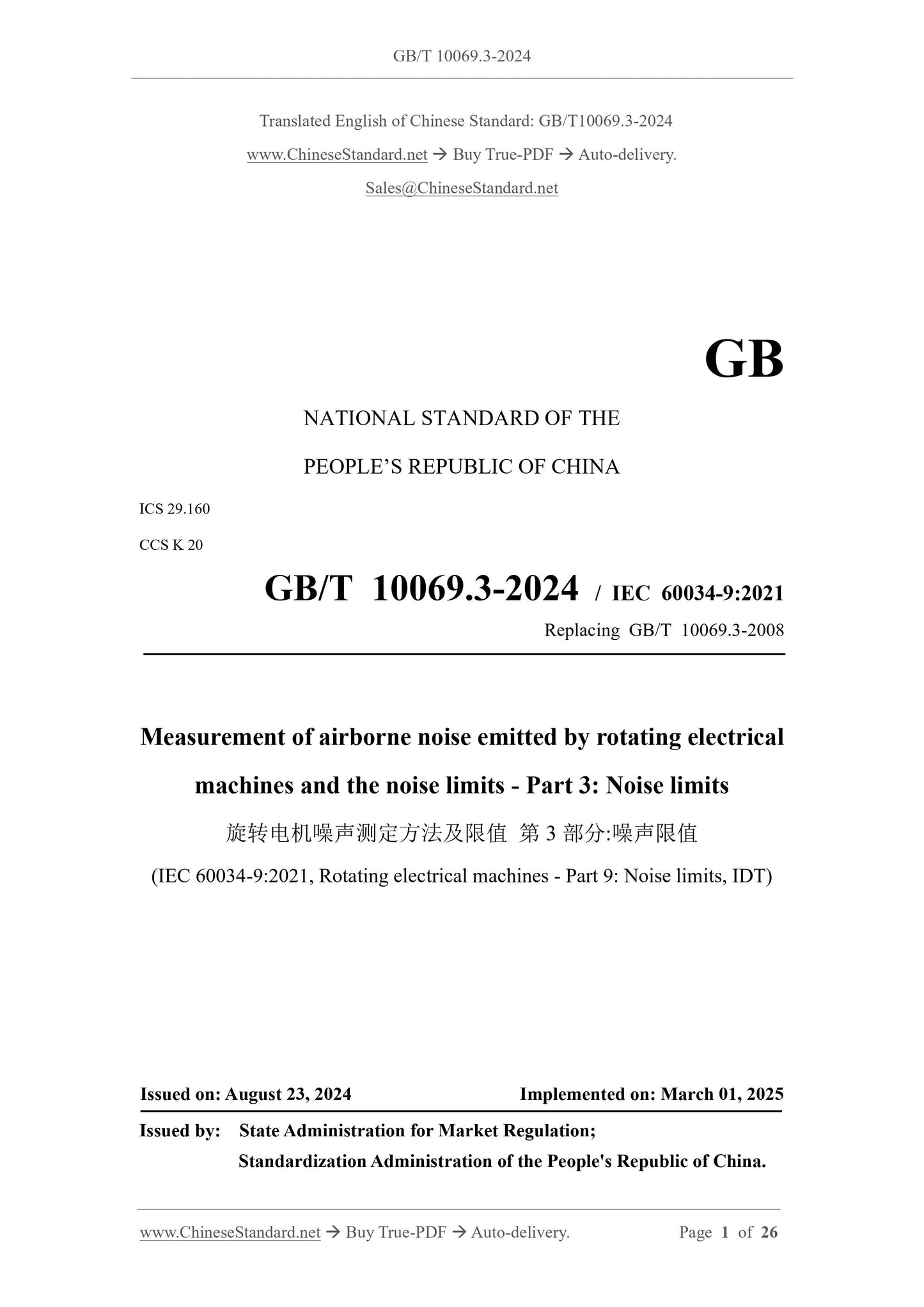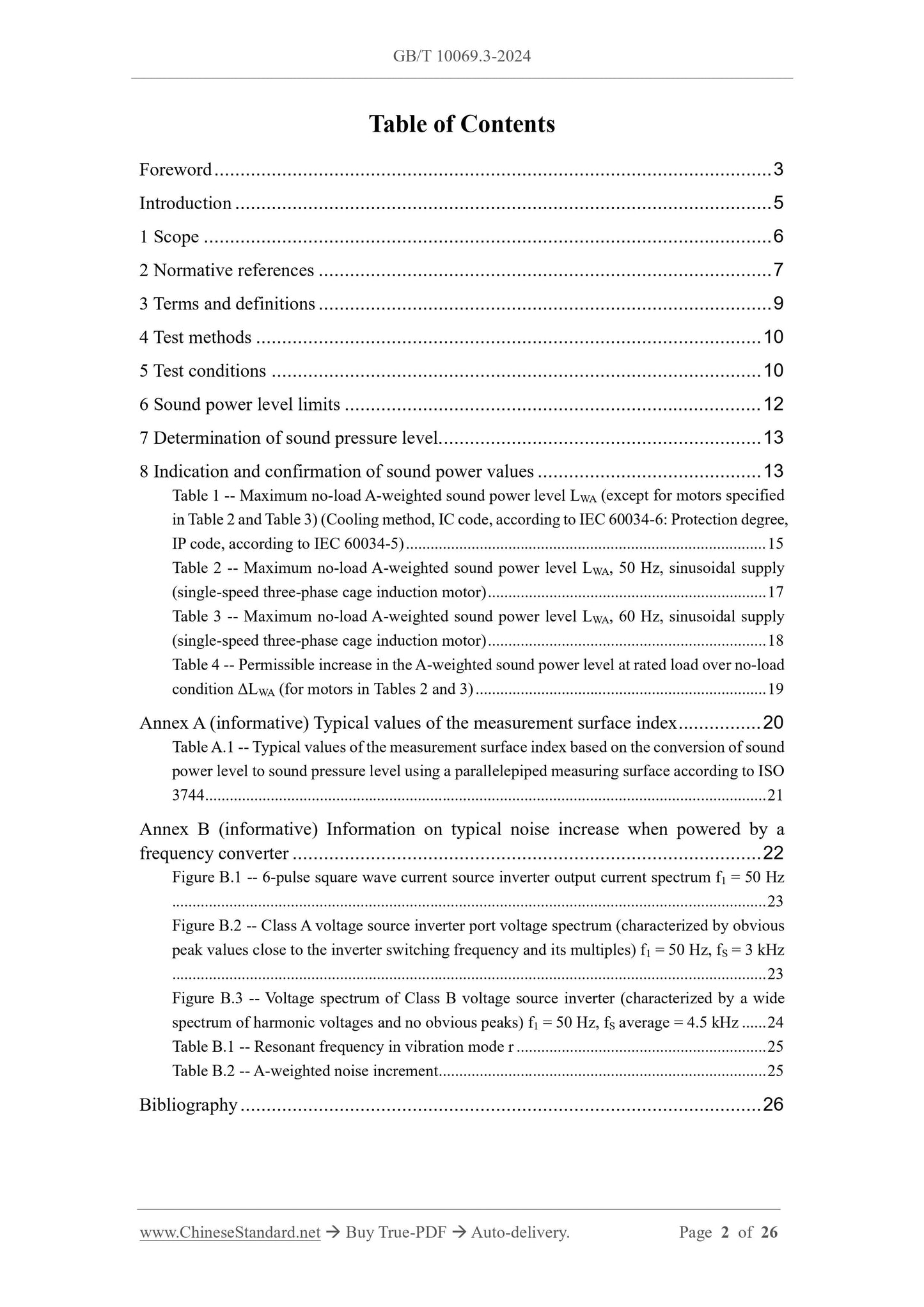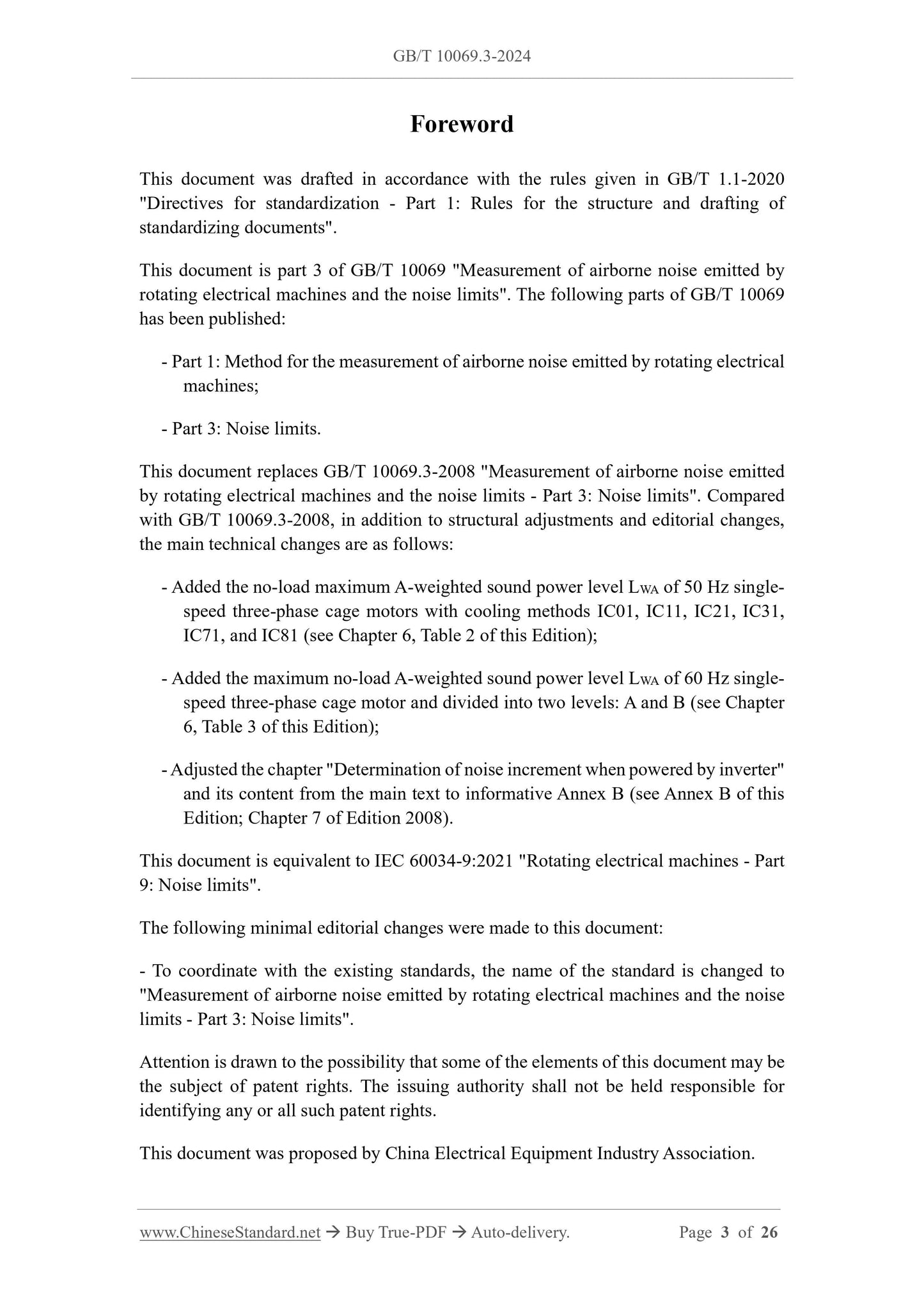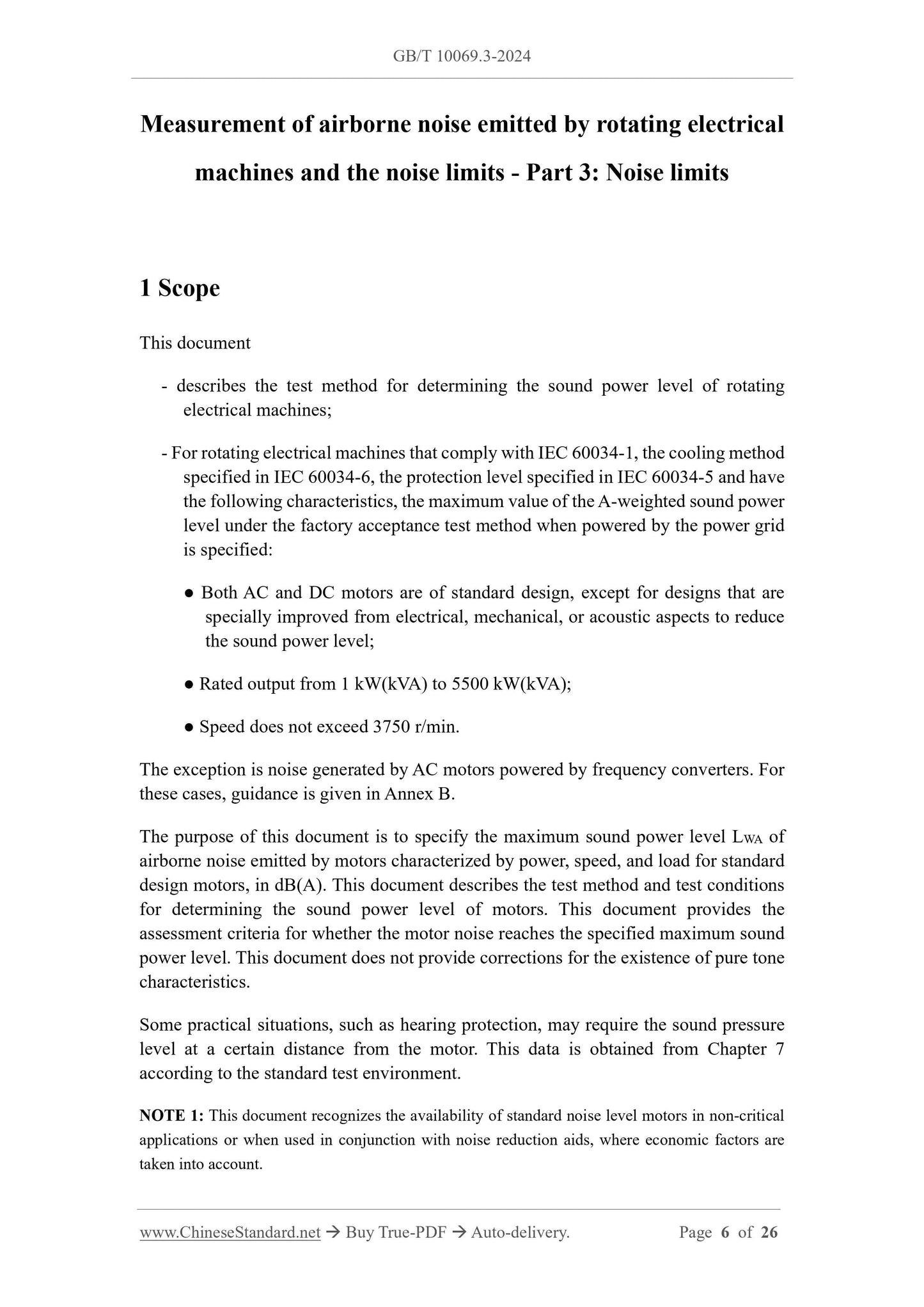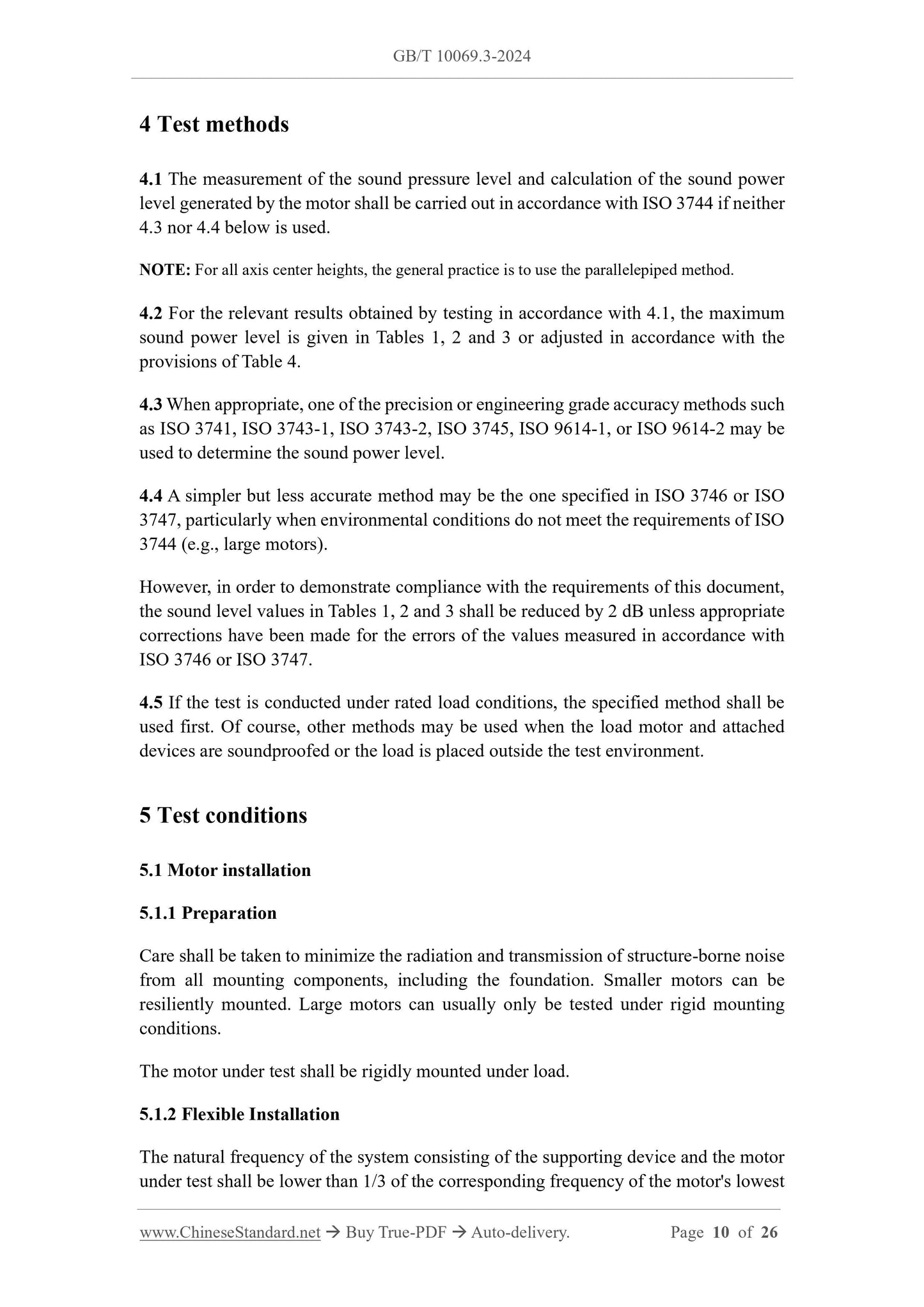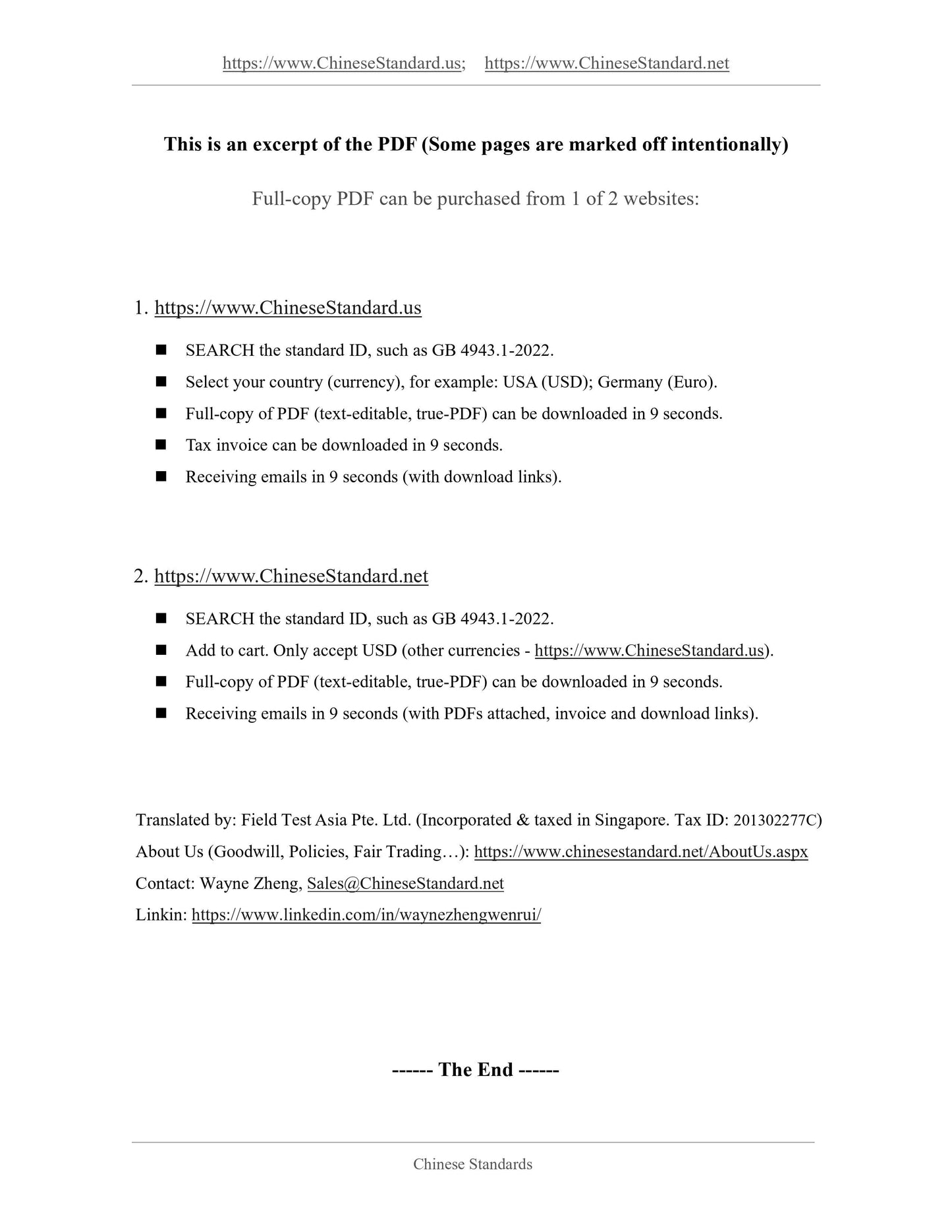1
/
of
6
www.ChineseStandard.us -- Field Test Asia Pte. Ltd.
GB/T 10069.3-2024 English PDF (GB/T10069.3-2024)
GB/T 10069.3-2024 English PDF (GB/T10069.3-2024)
Regular price
$380.00
Regular price
Sale price
$380.00
Unit price
/
per
Shipping calculated at checkout.
Couldn't load pickup availability
GB/T 10069.3-2024: Measurement of airborne noise emitted by rotating electrical machines and the noise limits - Part 3: Noise limits
Delivery: 9 seconds. Download (and Email) true-PDF + Invoice.Get Quotation: Click GB/T 10069.3-2024 (Self-service in 1-minute)
Newer / historical versions: GB/T 10069.3-2024
Preview True-PDF
Scope
This document- describes the test method for determining the sound power level of rotating
electrical machines;
Basic Data
| Standard ID | GB/T 10069.3-2024 (GB/T10069.3-2024) |
| Description (Translated English) | Measurement of airborne noise emitted by rotating electrical machines and the noise limits - Part 3: Noise limits |
| Sector / Industry | National Standard (Recommended) |
| Classification of Chinese Standard | K20 |
| Classification of International Standard | 29.160 |
| Word Count Estimation | 24,252 |
| Date of Issue | 2024-08-23 |
| Date of Implementation | 2024-08-23 |
| Issuing agency(ies) | State Administration for Market Regulation, China National Standardization Administration |
Share
